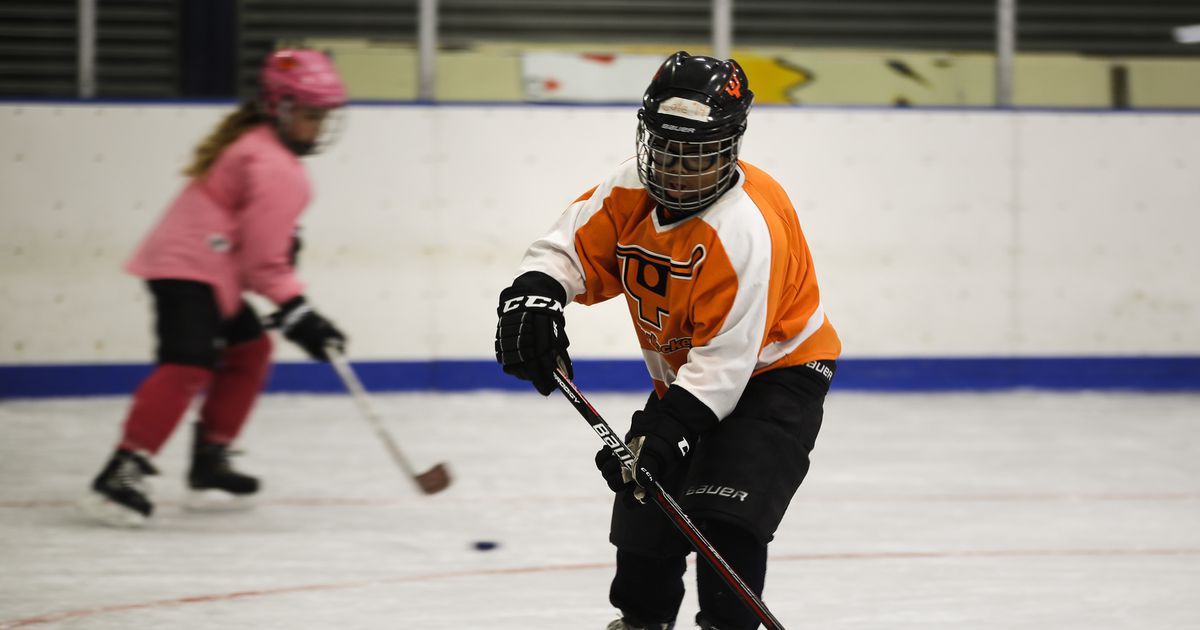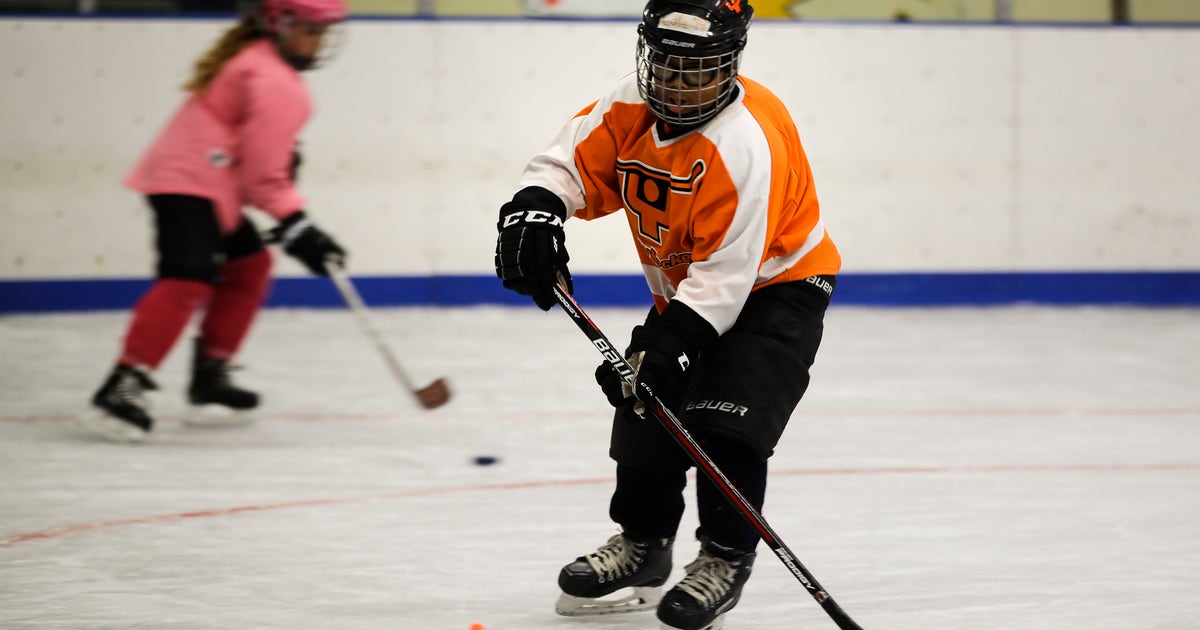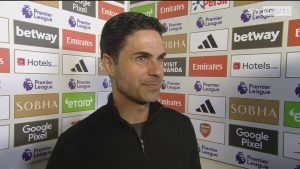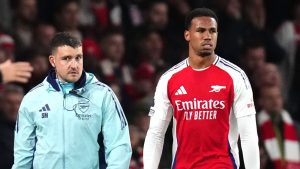In city centers, a determined effort to diversify hockey


PHILADELPHIA (AP) — In a crowded hallway at Scanlon Ice Rink, Logan Johnson slid into his pads as his brother Malakye and sister Wylla skittered around sticks and bags bulging with hockey equipment.
Their mother, April, tried to keep order and Wylla asked whether a board game of Candy Land might help fill the time until Malakye’s practice, which didn’t start until a half-hour after Logan wraps up. Snacks and homework were handy since the family knew they would be spending several hours here on a school night.
It was a standard visit to the rink for the Johnsons, who are familiar with the 20-minute drive from their Germantown neighborhood to Kensington in north Philadelphia. Four years after knowing nothing about hockey, the sport now consumes their lives for nine months out of the year between travel, practices and games, as it does for countless families of young players across North America.
The Johnsons, however, are African-American and the participation of people of color in a sport that has for decades been predominantly played by whites still stands out 61 years after Willie O’Ree broke the color barrier in the National Hockey League. Minority players in the NHL remain a relative rarity but the effort to increase diversity in the sport — some of it funded by the league — has never been more robust than it is now. The results can be seen in neighborhoods where basketball, baseball and football are still the top choices for many.
Hockey was a tough sell for the Johnson family with football the sport of choice in Germantown. April Johnson said she didn’t want to switch her children, now 13, 10 and 8, to the ice even when she found out it could be free through the Snider Hockey program that runs programs at five city rinks, including Scanlon. She now tells everyone she can about her experience, though she encounters plenty of reluctance — almost always that their child already plays football or basketball.
“Some people are just kind of gun shy,” she said. “They don’t know what to expect, so they just don’t even want to try it out.”
The challenge for youth hockey programs trying to add minority players are cultural, socio-economic and logistical. The sport, unlike others, has to feel more welcoming and inclusive than others in communities that have shunned or ignored it.
The Scanlon rink, in the heart of a neighborhood that has struggled with drugs and crime, is both a refuge and a showcase of what the future of the sport could look like. Far from the reputation of hockey being a white sport, children and families of all races and from all corners of the city reflect the population far more than the NHL today.
While just 5 percent of the 778 NHL players are minorities, that number is 70 percent within Snider Hockey, a program the late Flyers owner Ed Snider started in 2005 and provides free equipment, ice time and academic support for more than 3,000 students. Ice Hockey in Harlem, Detroit Ice Dreams and other organizations are also trying to bring the sport to people who never thought it was for them.
“The first barrier is just letting folks know about this opportunity that’s in their neighborhood,” Snider Hockey executive vice president Jan Koziara said. “The biggest barrier is convincing families who aren’t hockey fans, haven’t ever really been exposed to hockey to give it a shot. From there, people become hockey fans and hockey families very quickly.”
USA Hockey counted 382,514 youth players last season, up from 339,610 eight years earlier, but has only just begun tracking participation numbers by race and doesn’t yet have any data to share publicly. Kim Davis, hired in 2017 as the NHL’s first executive vice president of social impact, growth and legislative affairs, said she believes diversity of hockey at the youth level is underestimated.
“You look across the country, you can’t help but know that given the demographics that we’re seeing regionally and state by state that the pipeline of talent, particularly for kids that are starting our sport as early as age 3 or 4, is shifting,” she said.
William Frey of the Brookings Institute, who has consulted the NHL on demographic shifts, expects the 2020 census to show the population under age 18 is less than half white, which makes the outreach to nontraditional hockey communities critical to the future of the sport.
“We don’t want to leave anybody behind,” said Capitals owner Ted Leonsis, who aided an effort to keep Washington’s Fort Dupont Ice Arena open amid a funding crisis. “It’s within everyone’s best interest to make sure that we build organizations, businesses, communities that are reflective to the people that you serve.”
It remains a challenge to lure children to an unfamiliar sport. Kids in Kensington who know LeBron James and Steph Curry are less likely to know about black hockey players like P.K. Subban or even Wayne Simmonds, who was recently traded by Philadelphia to Nashville.
“A lot of kids don’t see it, so they don’t think it’s OK,” said Jason McCrimmon, the Detroit Ice Dreams president and founder. “That’s what we still deal with in this day and age when we go out to recruit. It’s still like: ‘I don’t really want to play hockey. My friends don’t play it or what would they think of me if I played it?’ It’s an easier situation for a kid to kind of adapt and going the route of playing basketball or football because it’s so normal and it’s seen on a regular basis for kids that look like them.”
The NHL said the league and the NHL Players’ Association have invested roughly $100 million since 2015 in programs to grow the game, from the joint Industry Growth Fund to Hockey is for Everyone, Future Goals and Learn to Play. Subban, Simmonds, Columbus’ Seth Jones and O’Ree serve as inspirations in black communities across North America just as players like Scott Gomez, Richard Park, Jonathan Cheechoo and Craig Berube did for Hispanic, Asian and Native American and First Nations communities.
“When I was younger, if I didn’t see people who look like me playing hockey, that’s probably something that I wouldn’t have (gotten into),” Simmonds said.
Snider Hockey exemplifies that in Philadelphia, which is more than 40 percent black. Director of programs Dan Rudd said it was difficult to find black and Latino coaches to reflect the community at first but over the past decade alumni have come back to coach.
There is Virlen Reyes, who went from the streets of Kensington to captain West Chester University to a club hockey national title, became Snider Hockey’s first college graduate and now co-owns an art studio. There is Kaseir Archie, another Kensington kid who chose hockey over basketball and is now a junior at Drexel.
Reyes used to get strange looks carrying her bag and stick on the train and saw drug dealers and syringes not far from Scanlon. Now she sees all kinds of kids rolling their gear into the building.
“I’ve seen an immense decrease in drug influence and violence within that community,” Reyes said. “You have people from outside the community, they are coming in and bringing their families. To see other families be comfortable with coming into a community that’s known to be one of America’s most violent and drug-influenced areas, that is a signal to know that great change is happening here.”
When he’s not watching NHL Network to learn about a sport he was entirely unfamiliar with, Chip Finney comes from West Philadelphia for his 9-year-old son Miles’ practices. A conversation with another father in the schoolyard took Finney’s family to hockey, and now Miles is the goalie for a team that also has a Muslim girl who wears a hijab on the ice.
“This unusual is his normal,” Finney said.
O’Ree, who broke the NHL color barrier with the Boston Bruins in 1958, has spent 22 years as the league’s diversity ambassador. He said he has noticed significant progress.
“Hockey’s a white sport? That’s ridiculous,” O’Ree said. “You can play any sport you want regardless of what color you are if you have the will and the desire.”
Rudd and Snider Hockey coaches have honed their message at schools and churches to try to reach more kids like Malakye Johnson, whose friends still don’t play hockey. Kids and parents, after all, make up the real sales force.
“It just takes word of mouth,” April Johnson said.





